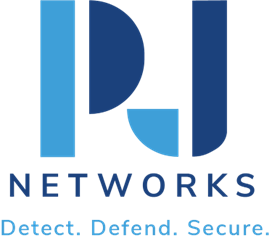Reducing Cyber Threats with Real-Time SIEM Monitoring
Introduction
Let’s talk about real-time SIEM, a buzzword in the cybersecurity world. If you’re in the business of strengthening your organization’s security, then you know how crucial it is. The heart of it is real-time monitoring which plays a pivotal role in cyber threat reduction. Having a proactive security approach is what keeps businesses safe and helps us sleep better at night.
Understanding Real-Time SIEM Monitoring
So, what exactly is real-time SIEM monitoring? It’s like having a 24/7 surveillance team that never sleeps. It stands for Security Information and Event Management. It’s about collecting and analyzing information from various sources like networks, devices, and databases.
- Analyzes every event as it happens
- Correlates data to identify potential threats
- Alerts you when something suspicious is detected
Think of it as your security alarm system that goes off at the sign of an intrusion. If you’re not watching those alerts in real-time, you could be too late to stop an attack.
Benefits of Real-Time Analysis
The reasons why real-time analysis is essential are numerous. Let’s break them down:
- Immediate Threat Detection: Catch threats as they unfold. A fast reaction can prevent data breaches.
- Proactive Security: It’s not just about reacting to threats but anticipating them.
- Comprehensive Insight: A unified view of your security landscape helps in understanding the bigger picture.
- Efficiency and Precision: Streamline your security operations with precise data-driven alerts.
Now, these benefits aren’t just theoretical. They translate to real impact on your security posture.
Implementation Strategies
When it comes to implementing SIEM monitoring, simplicity is key. What’s the best way to start?
- Define Objectives: Understand what you want to achieve with SIEM. Is it threat detection, compliance, or both?
- Choose the Right Tools: There’s a sea of SIEM solutions. Pick one that aligns with your objectives.
- Continuous Monitoring: Make sure your systems are continuously monitored and not just set up as a one-off.
- Regular Reviews: Periodically review your SIEM configurations and threat intelligence feed.
- Integrate with Existing Systems: Ensure it plays well with other security tools you might already have.
It’s a step-by-step journey, and evolving is part of the game.
Case Studies
Let’s look at some examples of organizations using real-time SIEM effectively. These aren’t just success stories; they’re roadmaps for what you can achieve.
Case Study 1: Financial Firm
A major financial firm was struggling with increasing cyber threats. By implementing real-time SIEM monitoring, they managed to reduce their incident response time by 50%. The proactive security approach gave them the agility to counter threats swiftly.
Case Study 2: Healthcare Provider
Security is crucial in the healthcare industry. A healthcare provider adopted SIEM monitoring to protect patient data. The real-time analysis alerted them to an insider threat, saving them from a potential data breach disaster.
These examples showcase the transformative power of real-time SIEM in enhancing security readiness.
Conclusion
In a world where cyber threats are constantly evolving, staying ahead with real-time SIEM monitoring is not an option, it’s a necessity. It offers a competitive edge by ensuring cyber threat reduction through a proactive security approach. The key takeaway? Embrace real-time to make your cybersecurity strategy robust.
Let’s keep our businesses safe with the power of real-time SIEM monitoring. Together, we can build a secure cyber environment.
